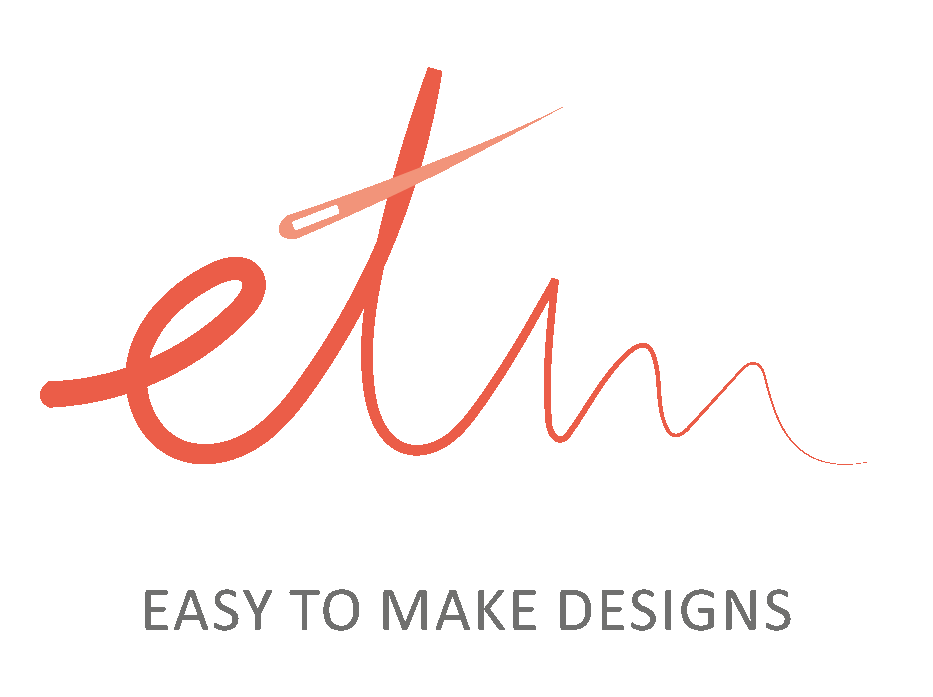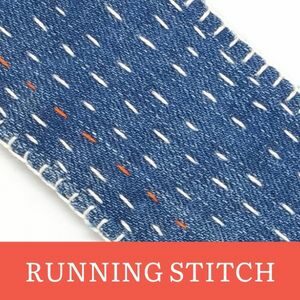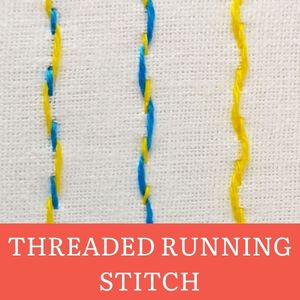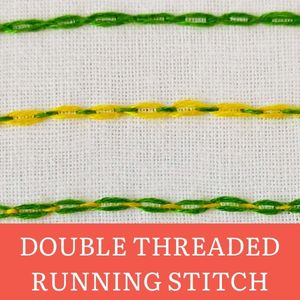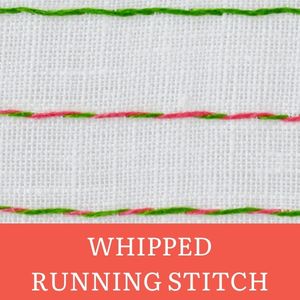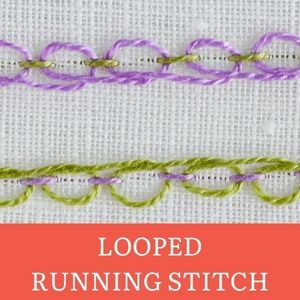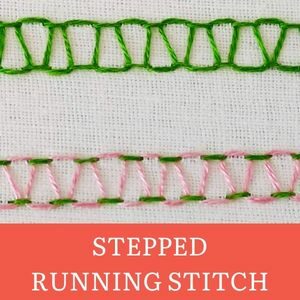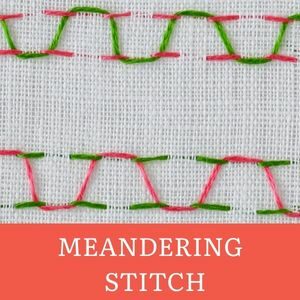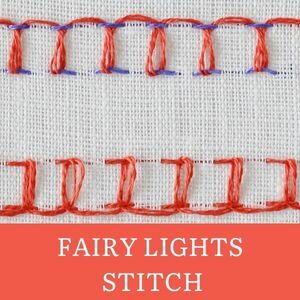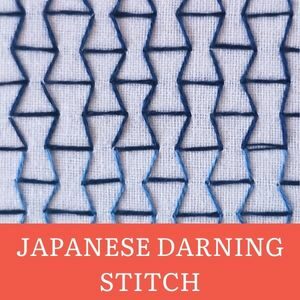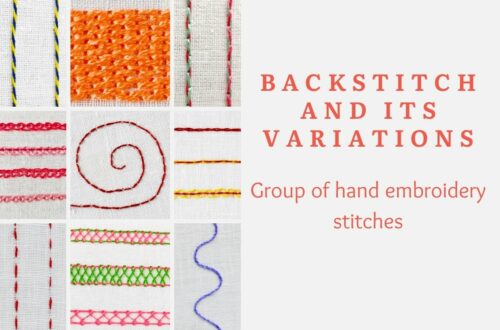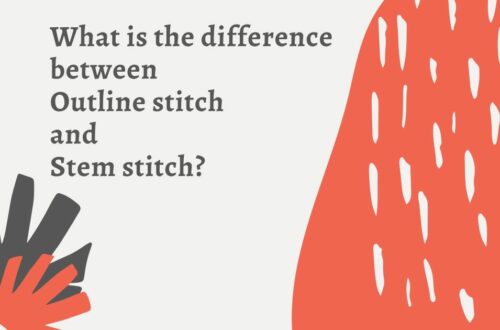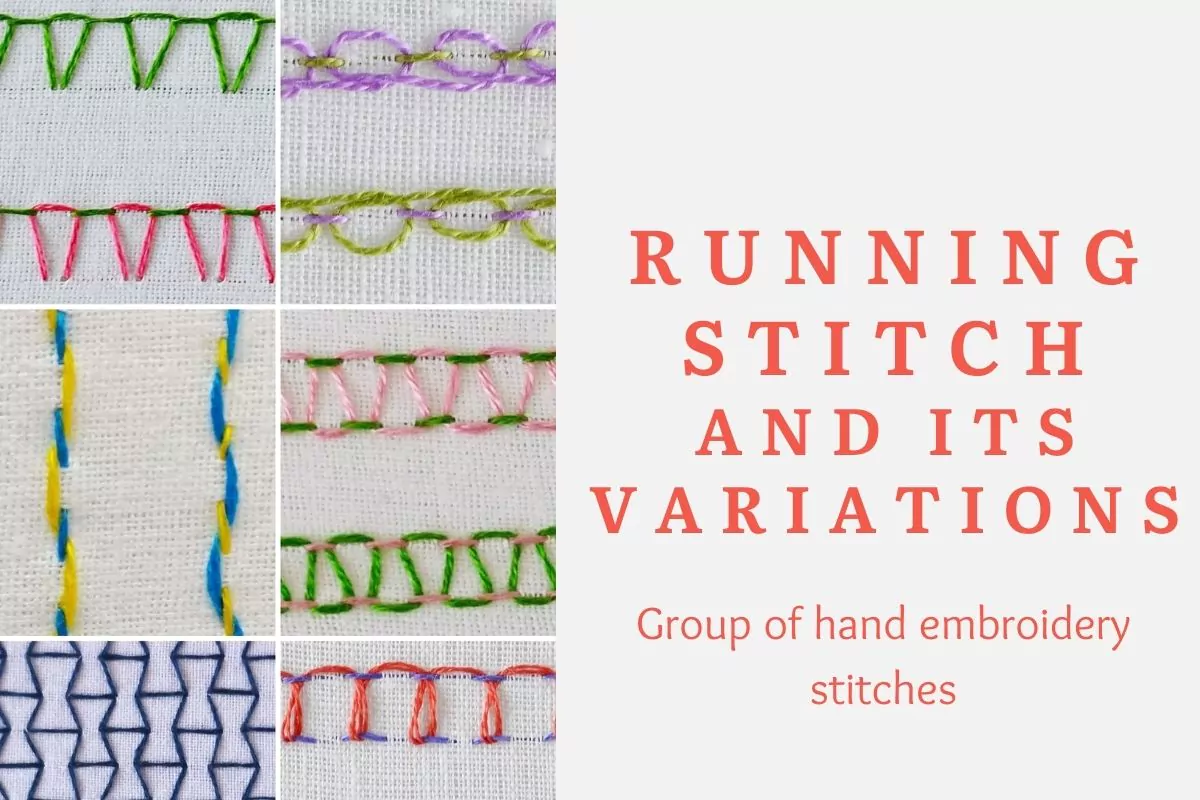
Running stitch and its variations
Group of hand embroidery stitches. Running stitch and its variations.
I guess every sewist or embroiderer knows the running stitch. It’s one of the first stitches we learn, right? Also, it’s one of the stitches that we use a lot. For example, we can use a running stitch for outlines, borders, or lettering in hand embroidery. Besides that, a simple running stitch is a base for some more complex composite stitches.
But that’s not all. Running stitch is excellent for mending clothes or basting. And also, it’s indispensable in hand quilting.
You will find a list of running stitch variations below. In addition, there is a link to a video tutorial where I demonstrate how to embroider that stitch in every stitch description.
Running stitch
The running stitch or straight stitch is the basic stitch of hand embroidery, on which all other forms of sewing are based. The stitch is worked by passing the needle in and out of the fabric. The needle is always pushed through the cloth, starting on the side and ending on the other side. Varying the length of the stitches and the thread’s thickness, you can create very different outlines of the shapes.
Read more about this stitch and watch a video tutorial of the running stitch HERE.
Threaded running stitch
Threaded running stitch is a hand embroidery stitch made combining running stitch and threading. After embroidering the running stitch, lace the second thread through the running stitches without entering the fabric or crossing the running stitch.
You can embroider the threaded running stitch in a single color to create a wavy line. Or, you can choose two contrasting colors to create exciting patterns.
Watch THIS video tutorial and learn how to embroider a threaded running stitch.
Double threaded running stitch
One more variation of threaded running stitch. But this time, it is more decorative and voluminous.
After embroidering the running stitch, lace the second thread through the running stitches without entering the fabric or crossing the running stitch. This lacing is made two times to form a chain-like pattern.
You can embroider the threaded running stitch in a single color and create a single color chain or choose two contrasting colors to create exciting patterns.
Read more about this stitch and watch a video tutorial of the running stitch HERE.
Whipped running stitch
A whipped running stitch is a hand embroidery stitch made in two steps. First, we embroider a simple running stitch and then whip it with another thread. For example, you can use the same color thread to make a straight raised line or two contrasting colors to create a rope-like line.
You will find more information and a video tutorial of this stitch HERE.
Looped running stitch
A looped running stitch is one more hand embroidery stitch where the running stitch is used as a base. First, we embroider a simple running stitch and then add looped lacing it with another thread. You can use the same color thread to make a single color ornament or two different colors to create intriguing patterns.
Watch THIS video tutorial and learn how to embroider a looped running stitch.
Stepped running stitch
A stepped running stitch is a hand embroidery stitch made combining the foundation stitch (running stitch) and threading.
After embroidering two parallel lines of the running stitch, lace the thread through the running stitches without entering the fabric or crossing the running stitch. This threading, made in precise order, creates a decorative stitch that is perfect for decorative borders.
Read more about this stitch and watch a video tutorial of the stepped running stitch HERE.
Meandering stitch (parallel running stitch)
To make a meandering stitch, first, we embroider two parallel rows of a simple running stitch. The stitches in the rows are placed one under the other. The second step is lacing. We lace a thread through the two rows of running stitches to form a decorative motive. We can use the same color both for running stitches and for lacing.
You will find more information and a video tutorial of this stitch HERE.
Fairy lights stitch (parallel running stitch)
A fairy lights stitch is a hand embroidery stitch made in two steps. First, we embroider two parallel rows of a simple running stitch. The stitches in the rows are placed one under the other. The second step is lacing other threads through the parallel running stitches. We lace an embroidery floss through the two rows of running stitches to form a decorative motive.
You will find more tips and video tutorials of this beautiful stitch HERE.
Eskimo lace ending
Eskimo lace ending is also called Eskimo stitch and Laced edging stitch.
This decorative hand embroidery stitch is made by combining the running stitch and lacing. You can use this basic stitch for borders or decorative outlines.
Read more about this stitch and watch a video tutorial of the Eskimo lace ending stitch HERE.
Japanese darning stitch
Japanese darning stitch is a variation of a running stitch for filling. In this stitch, two parallel lines of running stitches are connected with diagonal stitches. Traditionally it is used for darning in sashiko and boro embroidery. In modern embroidery, a Japanese darning stitch can fill extensive areas and create a beautiful geometrical pattern.
Watch a video tutorial and learn more about the Japanese darning stitch HERE
As you can see, there are many beautiful variations of a running stitch that you can use in hand embroidery, quilting, sewing, or mending. From a simple line to decorative borders and even filling areas!
Watch these video tutorials, learn new hand embroidery stitches and use them with confidence!
You May also like these articles:
- Backstitch and its variations
- Best embroidery stitches for outlines
- Border designs for hand embroidery
Looking for more video tutorials?
I add new video tutorials to my channel every week. To get notified when a new video goes live, subscribe to my YouTube channel and click on the bell right beside the button.
Or sign up for my newsletter and be the first to know when I release a new hand embroidery video, DIY tutorial, or blog post!


